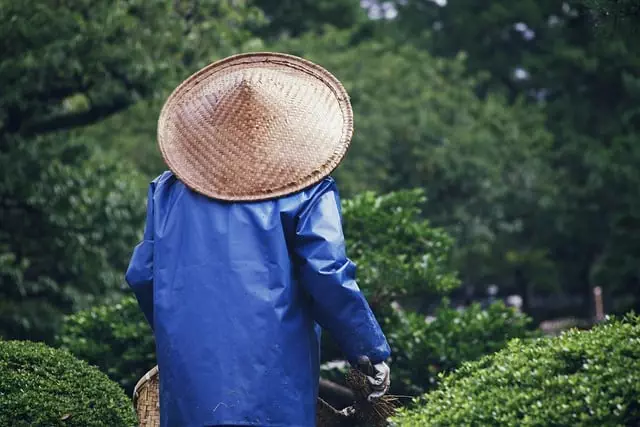Regular arboriculture through tree trimming is essential for maintaining tree health and safety on both residential and commercial properties. This process, which involves strategic pruning, not only improves a tree's structure and resilience but also contributes to safety by reducing wind resistance and preventing disease or pest infestation. Professionals handle the resulting debris through efficient yard waste removal and recycling services, transforming organic waste into compost or mulch that enriches soil and supports plant growth. These services are key to sustainable ecosystems and help mitigate storm damage risks. Moreover, communities are embracing eco-friendly yard waste removal and recycling practices to protect the environment and reduce landfill use. By properly separating yard waste and utilizing modern equipment to create mulch or wood chips on-site, homeowners and landscapers contribute to a circular economy and improve soil quality for gardening. These initiatives not only prevent greenhouse gas emissions but also exemplify a commitment to environmental stewardship, highlighting the importance of integrating sustainable practices in managing organic waste.
Effective tree trimming is a cornerstone of healthy landscape maintenance and plays a pivotal role in safeguarding property integrity. This article delves into the multifaceted nature of tree upkeep, emphasizing the importance of routine care for tree health and safety. We explore the various methods for efficient yard waste removal and recycling, highlighting eco-friendly disposal options and innovative techniques that support sustainable practices. From the significance of professional services to the transformation of trimming debris into valuable compost or mulch, readers will gain insights into enhancing their outdoor spaces while adhering to local regulations. Understanding yard waste removal and recycling is not just about cleanliness; it’s about contributing to a greener environment and ensuring the longevity of our natural surroundings. Join us as we unravel the intricacies of responsible tree care, yard waste management, and the environmental benefits that come with them.
- Understanding Tree Trimming: The Importance of Regular Maintenance
- Efficient Yard Waste Removal and Recycling Methods
Understanding Tree Trimming: The Importance of Regular Maintenance

Regular tree trimming is an essential aspect of maintaining a healthy and safe landscape. This practice, often referred to as arboriculture, involves selectively cutting branches, shrubs, or limbs to improve a tree’s structure, health, and safety. Professional yard waste removal and recycling services play a pivotal role in the maintenance process by efficiently handling the debris generated from trimming activities. By removing fallen branches and leaves, these services not only keep the environment clean but also recycle organic matter into compost or mulch, which can then be used to enrich soil and support plant growth. This not only contributes to the sustainability of natural ecosystems within residential or commercial properties but also ensures that yard waste does not contribute to landfill waste. Timely trimming helps to prevent dense wood from developing, which can lead to increased wind resistance and potential storm damage. It also allows sunlight to penetate the tree’s canopy, encouraging even growth and reducing the likelihood of disease or pest infestation. By integrating regular yard waste removal and recycling into tree trimming routines, property owners can safeguard their yards against overgrowth and ensure the longevity and vitality of their trees.
Efficient Yard Waste Removal and Recycling Methods

Efficient yard waste removal and recycling methods play a pivotal role in maintaining the health of ecosystems and reducing landfill usage. As communities increasingly recognize the environmental impact of disposing of organic waste improperly, there has been a surge in the development and implementation of eco-friendly yard waste disposal systems. Local governments and waste management companies are working together to create comprehensive programs for the collection and composting of yard trimmings, leaves, and grass clippings. These programs not only facilitate the decomposition of organic matter into nutrient-rich soil amendments but also divert significant volumes of waste from landfills, where they would otherwise decompose anaerobically, releasing potent greenhouse gases.
Homeowners and landscaping professionals can contribute to this effort by separating yard waste at the source, ensuring that it is collected for recycling. The separation process is often as simple as setting aside organic waste in designated compost bins or containers. Additionally, advanced technology has led to the creation of chippers and grinders that efficiently transform trimmed branches and fallen leaves into mulch or wood chips, which can then be used to enrich soil quality on-site. These recycling methods not only promote a sustainable cycle but also provide valuable resources for gardening and landscaping. By embracing these efficient yard waste removal and recycling practices, communities can significantly enhance their environmental stewardship and create a more sustainable future.
Effective tree trimming is a cornerstone of maintaining healthy and safe landscapes, contributing significantly to the longevity and beauty of trees. Alongside this essential practice, yard waste removal and recycling play a pivotal role in preserving environmental health. Homeowners and professionals alike should prioritize these practices to ensure yards remain clean, safe, and supportive of arboreal growth. By adopting efficient yard waste removal and recycling methods, communities can not only enhance their outdoor spaces but also contribute to sustainable waste management initiatives.


